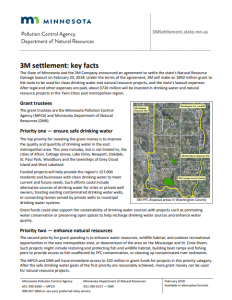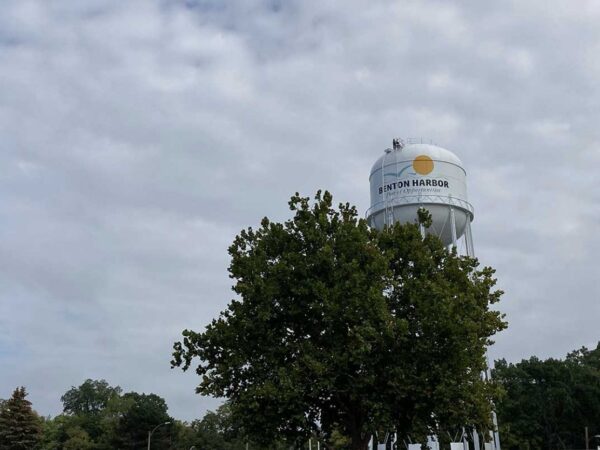
But no emergency declarations in Illinois and Wisconsin
While the spotlight remains on Michigan’s growing list of sites contaminated with PFAS, neighboring Great Lakes states are also responding to the toxic threat.
Both Illinois and Wisconsin are now launching programs to determine the scope of the PFAS problem and to plot best courses of action as the emerging contaminant threatens basic drinking water sources.
Polyfluoroalkyl substances (PFAS) are a group of man-made chemicals that have been in use since the 1940’s, according to the U.S. Environmental Protection Agency website. The emerging contaminants are found in a wide range of common products like teflon and can easily migrate into drinking water near specific sites like firefighting training facilities.
Exposure to the emerging contaminants may affect the learning ability of children, the immune system and increase the risk of cancer according to the federal Center for Disease Control’s toxic substance agency.
In Wisconsin, the Department of Natural Resources “has developed an internal workgroup to determine the scope of the problem and best courses of action,” spokesperson James Dick told Great Lakes Now.
In Wisconsin’s Marinette County PFOS and PFOA chemicals have been found in some drinking water wells according the DNR, which identified JCI Tyco as the source. Bottled water has been offered to potable well owners according to the agency.
Two other sites, Mitchell Air Force Base in Milwaukee and Fort McCoy in Monroe County are in the investigative stage according to the DNR’s James Dick.

Mitchell Air Force Base, Photo by afcec.af.mil
The Mitchell site has contamination in soil and groundwater but there is no indication that private wells have been affected, according to Dick. He also said no states of emergency have been declared in Wisconsin.
Illinois has identified three sites of concern.
Both PFOS and PFOA have “been identified in shallow groundwater, soil, sediment and surface water” at decommissioned Chanute Air Force Base in central Illinois, according to Illinois EPA spokesperson Kim Biggs.
Biggs said the chemicals at Chanute were “not found in the deeper drinking water aquifer” and the Department of Defense is conducting investigations at other federal sites.
While no longer operational, parts of the base have been repurposed for civilian use.
The Illinois EPA sampled the communities of Albany and Freeport where the chemical contaminants were suspected and worked with both to manage known or potential problems, according to Biggs.
Biggs said “there have been no states of emergency declared in regards to drinking water in Illinois” and like Wisconsin, it is developing a work group “to determine next steps forward.”
Both states told Great Lakes Now that they are working and communicating with the U.S. EPA as the PFAS issue continues to unfold.
Earlier this year, Minnesota settled its perfluorochemicals (PFCs) lawsuit against 3M for $850 million. The 2010 suit alleged that “the company’s production of chemicals known as PFCs had damaged drinking water and natural resources in the southeast Twin Cities metro area,” according to a state website dedicated to the issue.
The proceeds will be devoted to drinking water and natural resource projects, the site says.
Minnesota has been sampling for PFCs since 2003 and expects to sample approximately 1,000 wells by June 2019.
Indiana’s Grissom Air Force Base has been identified as a potential contaminated site but the Department of Environmental Management did not respond to a Great Lakes Now request to comment.
In May, the U.S. EPA hosted a National Leadership Summit on PFAS that was attended by representatives of all the Great Lakes states except Illinois.
In a post-summit press release former EPA Administrator Scott Pruitt said, “the agency will also take concrete actions to ensure PFAS is thoroughly addressed and all Americans have access to clean and safe drinking water.”
In July, a group of U.S. House representatives wrote to Pruitt’s replacement Andrew Wheeler, urging him to update details of drinking water advisories and to “effectively communicate and explain risks to the public.”
In addition to Michigan, there are high concentrations of contaminated sites on the east coast and in California according to an Environmental Working Group map.
Great Lakes Now has produced a three minute video explaining the PFAS issue and it’s impacts. Bureau Chief Mary Ellen Geist narrates.
Featured Image: A view of the Great Lakes from space, Photo by epa.gov via flickr.com






